The Earth has changed a lot throughout recent years. Nowadays, we have this highest technology ever built to communicate with one another even though the farthest distance. Many decades ago, one had to travel for months to communicate or even simply send a package. Even though the earth changed, some of our roads have not been renovated in years, even decades. Many of them were used before, and are now falling apart. We would probably think twice before going on them with our car, but we might not have a choice!
Here are 10 roads you would never want to drive on.
11. Passage de Gois
10. FRANCE
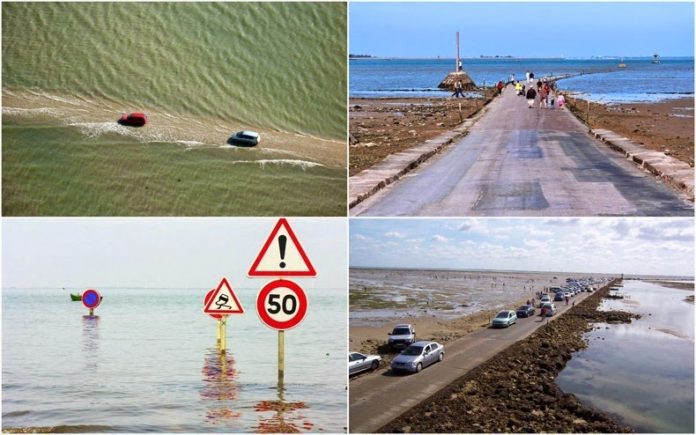
This 4.3 km stretch of road links the French mainland with the Island of Noirmoutier, on France’s Atlantic coast. At first glance you might think that’s not a bad road to drive on. Wait a few hours and your opinion will change as the tide comes in and causes the entire route to vanish. Twice a day this road is underwater and any car that mistimes their crossing is going with it. Even if, you time the tides just right, driving this road can be a challenge because it’s wet and covered with seaweed which can make it as slippery as ice.
9. Patiopoulo-Perdikaki Road

GREECE
Over the 23.5 km length of this Greek Road, the elevation changes almost 500 m. this might not sound so bad to you right now, but throw in a lot of potholes, significantly tight twists and turns, heavy trucks, pedestrian and livestock traffic and the fact that there are very few… If any, guardrails and you have one hell of a dangerous road. The icing on the cake for this particular route is that there are often no lines or markings which means many nighttime travelers drive straight off the road and to their death.
8. Luxor-Al-Hurghada Road
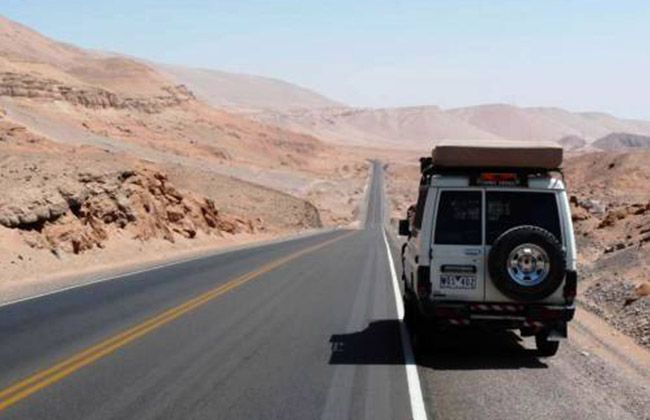
EGYPT
This stretch of road between the ancient city of Luxor and the Red Sea resort city of Hurghada is one of which many will tell you to stay away from. But why do you ask? First, the road goes through some rather remote areas where a breakdown can mean big trouble depending on what time of day it is. Second, this area is known to be patrolled by bands of criminals and terrorists who generally strike at night. This has led many people to drive without their headlights on at night resulting in a significant number of fatal head-on collisions. If you want to drive at night, purchase some high-end night-vision goggles.
7. Taroko Gorge Road
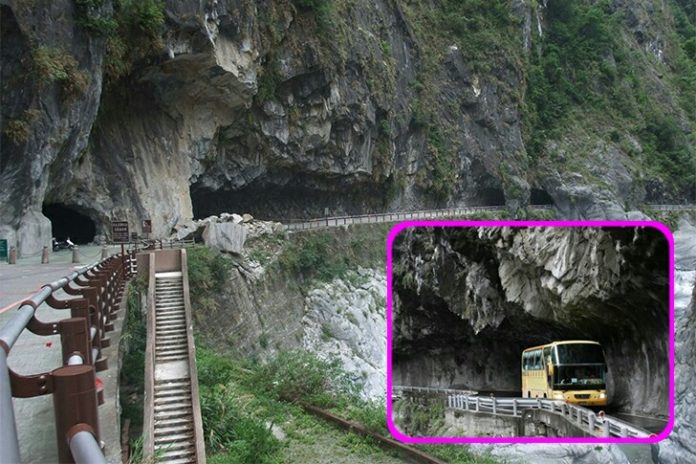
TAIWAN
Part of Taiwan’s highway number 8, the Taroko Gorge road is widely considered to be the country’s deadliest stretch of roadway. Carved into and sometimes through the mountainous terrain, this road faces significant erosion and landslides. Thanks to heavy rain and earthquakes, it has made all the more challenging by the fact that the road is extremely narrow in spots and has numerous blind corners, which can be full of surprises. Lose control or get bumped by another car? There’s a good bet you are plummeting down the side of the mountain and becoming the latest victim of this infamous stretch of road.
6. Skippers Canyon Road
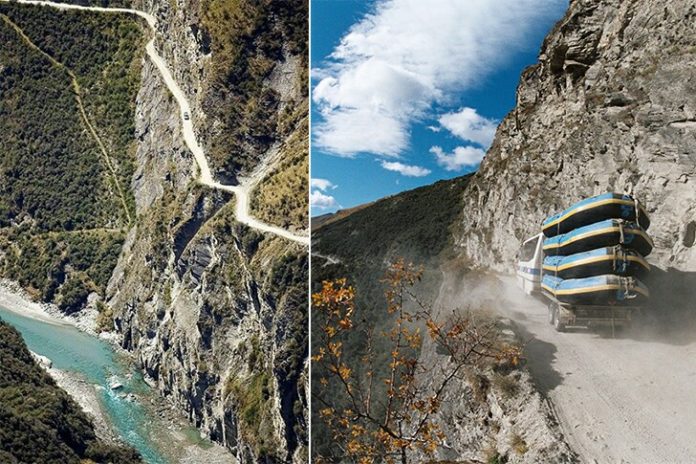
NEW ZEALAND
When your rental insurance won’t cover you for driving on a road, you know it must be dangerous. Located in Southwest New Zealand, Skippers Canyon Road has all the characteristics you’d expect of a dangerous route. It is carved into the side of a mountain has very little in the way of safety features and barriers and is extremely narrow. In fact, this stretch of 16.5 miles is so narrow that if two vehicles meet, one will often have to back up for some distance to find a pass wide enough to let the other pass safely.
5. Halseman Highway
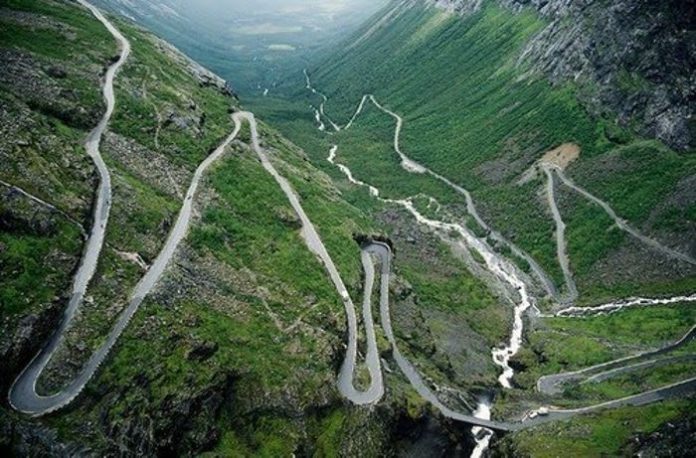
PHILIPPINES
Located 2,000 m above sea level, this road is safer in the summer months of March and April. That’s because over the rest of the year, heavy rainfalls fog rock and mudslides can turn this route into a nightmare. Tourists braved the risks to take in the amazing views of the landscape. Unfortunately, the dangerous environment combined with the fact that tour buses often drive far too fast on this rather narrow stretch means that every year there are many crashes as vehicles hit one another or simply roll off the edge of the road and plummet down the mountainside.
4. Tianmen Mountain Road
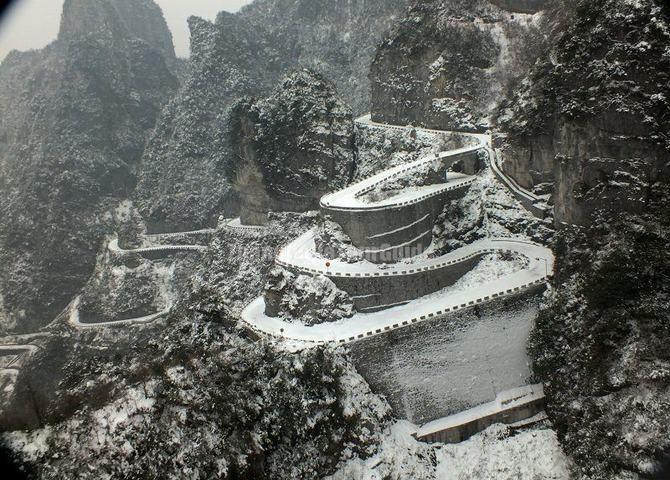
CHINA
11 km long and with an elevation change of 1,100 meters from start to finish, this Chinese Roadway is not for the faint of heart. With 99 hairpin turns, this road isn’t narrow by the standard of other roads mentioned in this video but meeting an oncoming vehicle can make things a bit challenging. There are barriers all along the route but too much speed or getting caught up in the beauty of the surrounding mountains won’t prevent you from going over the edge and taking a rather long fall to the bottom.
3. Eyre Highway
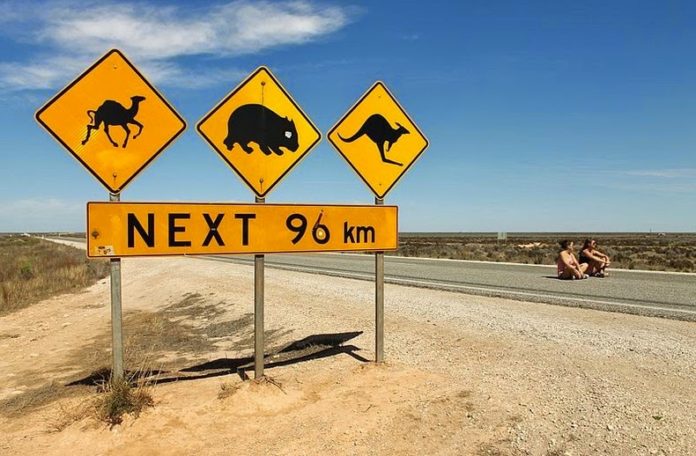
AUSTRALIA
Straight flat and well maintained, Australia’s Eyre Highway doesn’t sound like it belongs on this list of dangerous roads. Do not be fooled! This 1675km long stretch of road goes through one of the most desolate and remote parts of Australia. Picture Mad Max, only with far fewer bandits and more wombats, camels and kangaroos. In fact the road is so straight flat and featureless that motorists have a hard time paying attention or even staying awake. This has produced a significant number of crashes and collisions resulting in Australians giving this road a nickname, “Slaughter Alley.”
2. Karakoram Highway
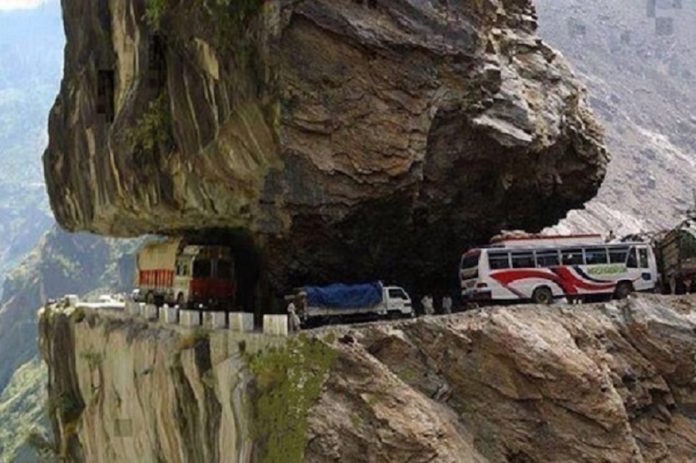
CHINA TO PAKISTAN
The world’s highest paved international roadway, the Karakoram
Highway cuts through the mountains and canyons that link China and Pakistan. Naturally, being a mountainous route, this road is dangerous to begin with. Add in heavy fog sudden blizzards and flooding and you have a terrifying drive. It doesn’t end there, however, as bandits and terrorists are known to camp out near certain sections of the road, always ready to strike an unsuspecting target. Even if you can handle all of this, the highway is so high above sea level that some drivers suffer from altitude sickness. Thanks to the thin air!
1. Zoji La Pass

INDIA
It truly is amazing what some people will call a road. This 9.5 km long stretch is situated 3.5 km above sea level and links the cities of Ladakh and Kashmir. High winds and heavy snowfall make this route impassable for long periods during the year. Motorists are advised to use four-wheel drive but the mud can become so thick after a rain that even the best vehicles get stuck. Even in perfect weather, the narrow roads lack of safety barriers and use by other large trucks and livestock means the shoji lap pass is one road to stay clear of.
Alright, after seeing all these roads, maybe we should all just stay home?
Sources
- The Richest
- Dangerous Roads


![[Photos] Why WD-40 Is Magic In Your Garden?](https://lifetonik.com/wp-content/uploads/sites/7/2019/08/WD40-Prices-Highres_Page_8_Image_0008-218x150.jpg)





![[Photos] Take A Look Of The Obama’s New Home Before It’s Banned](https://lifetonik.com/wp-content/uploads/sites/7/2019/07/Obama1-218x150.jpg)

![[Slideshow] Celebrity Homes: 21 Of The Most Luxurious](https://lifetonik.com/wp-content/uploads/sites/7/2019/07/Taylor-Swift-218x150.jpg)
![[Slideshow] More Parents Are Now Gluing Pennies to the Bottom of their Kid’s Shoes](https://lifetonik.com/wp-content/uploads/sites/7/2019/07/Keep-Them-Entertained-218x150.jpeg)
![[Photos] 20 Fashion Mistakes That Too Many Women Make!](https://lifetonik.com/wp-content/uploads/sites/7/2019/07/5-style-mistakes-that-make-you-look-frumpy-featured-218x150.jpg)









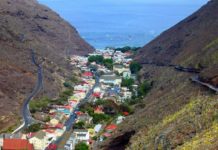









![[Gallery] 25 Discounts For Seniors To Which You Are Entitled Without Knowing It](https://lifetonik.com/wp-content/uploads/sites/7/2019/08/EAZxECUXUAAvNZR-218x150.jpg)
![[Slideshow] Here’s the salary of every governor in the United States](https://lifetonik.com/wp-content/uploads/sites/7/2019/08/Charlie-Baker-218x150.jpg)
![[Photos] No One Will Want To Buy This House After Seeing These Pictures](https://lifetonik.com/wp-content/uploads/sites/7/2019/08/terrible-real-estate-photos-2-5c35e727c9f95__700-218x150.jpg)



